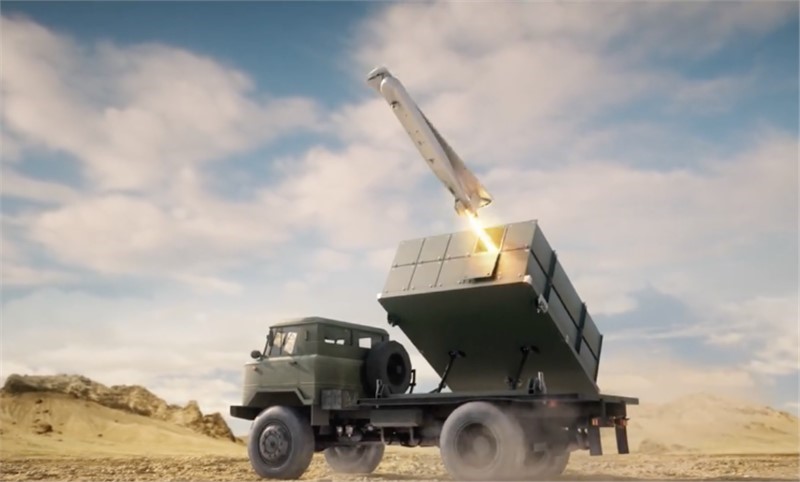SOURCE: IDRW.ORG


The Indian Army is actively pursuing the development of a long-range mobile launcher system for loitering munitions, capable of striking targets beyond 300 km from truck-mounted platforms. This ambitious initiative, driven by the need to counter advanced threats along India’s borders with China and Pakistan, marks a significant shift from the Army’s current inventory of short- to medium-range loitering munitions, such as the Nagastra-1, which have ranges of 30-100 km and are designed for man-portable operations.
According to defence sources close to idrw.org, the Army is engaging both public and private sector companies to meet this requirement, with preparations underway to issue a Request for Information (RFI) soon. This move underscores India’s strategic push to bolster its precision strike capabilities and adapt to the evolving dynamics of modern warfare, where long-range loitering munitions are proving to be game-changers.
Loitering munitions, often dubbed “kamikaze drones,” combine the surveillance capabilities of unmanned aerial vehicles (UAVs) with the precision of guided missiles, hovering over target areas before executing lethal strikes. The Indian Army’s current arsenal includes the indigenous Nagastra-1, inducted in 2024, which weighs 30 kg, has a 30-50 km range, and is man-portable, carried in two rucksacks for rapid deployment by small teams. Nagastra-2 and the prototype Nagastra-3, under development as part of the Medium Range Precision Kill System (MRPKS), extend ranges to 50-100 km, offering enhanced endurance and warhead capabilities. However, these systems are limited in reach, suitable for tactical engagements against personnel, bunkers, or light armor but inadequate for deep strikes against high-value or heavily defended targets.
The evolving threat landscape, particularly along the Line of Actual Control (LAC) with China, demands longer-range solutions. China’s People’s Liberation Army (PLA) has deployed advanced rocket forces, air defence systems, and loitering munitions like the Harbin BZK-005, capable of ranges exceeding 200 km, near the LAC. The PLA’s permanent outposts, such as those near Pangong Lake, and its missile bases in Tibet require India to develop stand-off strike capabilities to neutralize critical infrastructure without risking troops. Similarly, Pakistan’s growing drone capabilities, including Iranian-inspired Shahed-136 loitering munitions, necessitate a robust counter. A 300 km+ range loitering munition would enable the Indian Army to target enemy command centers, logistics hubs, or air bases from a safe distance, enhancing deterrence and operational flexibility.
The Army’s envisioned system involves truck-mounted mobile launchers capable of deploying loitering munitions with ranges exceeding 300 km. Unlike the man-portable Nagastra series, which prioritizes mobility for small teams, these heavy truck-based platforms would support larger, more sophisticated munitions equipped with advanced guidance systems, day-night sensors, and heavier warheads for anti-armor or anti-infrastructure missions. The launchers would likely draw inspiration from systems like the Pinaka Multi-Barrel Rocket Launcher (MBRL), which uses Tatra or Tata trucks for mobility and can fire 72 rockets in 44 seconds.
The Indian Army is in active discussions with public sector entities like the Defence Research and Development Organisation (DRDO) and private companies, including Solar Industries, Economic Explosives Limited (EEL), and Z-Motion Autonomous Systems, which have driven the Nagastra series’ success. Sources indicate that the Army is also exploring partnerships with firms like Tata Advanced Systems and Kalyani Group, known for their work on artillery systems and defence electronics. These engagements aim to leverage India’s growing private sector expertise, as evidenced by Solar Industries’ Rs 2,039 crore export orders for Nagastra-1 and its collaboration with DRDO on the Pinaka MBRL.
Preparations for issuing an RFI are underway, signaling the Army’s intent to formalize requirements and solicit proposals. The RFI, expected by mid-2025, will likely specify technical parameters, such as munition range, payload capacity, and launcher mobility, while emphasizing indigenous design, development, and manufacturing (IDDM) under the DAP 2020 framework. This aligns with the MoD’s recent Rs 10,147 crore contracts for Pinaka ammunition, awarded to EEL and Munitions India Limited, which prioritize over 70% indigenous content. The RFI will also seek to address integration with existing command-and-control systems, ensuring interoperability with the Army’s networked battlefield architecture.
NOTE : Article cannot be reproduced without written permission of idrw.org in any form even for YouTube Videos to avoid Copy right strikes. Websites doing illegal reproductions will get DMCA and Legal Notices.